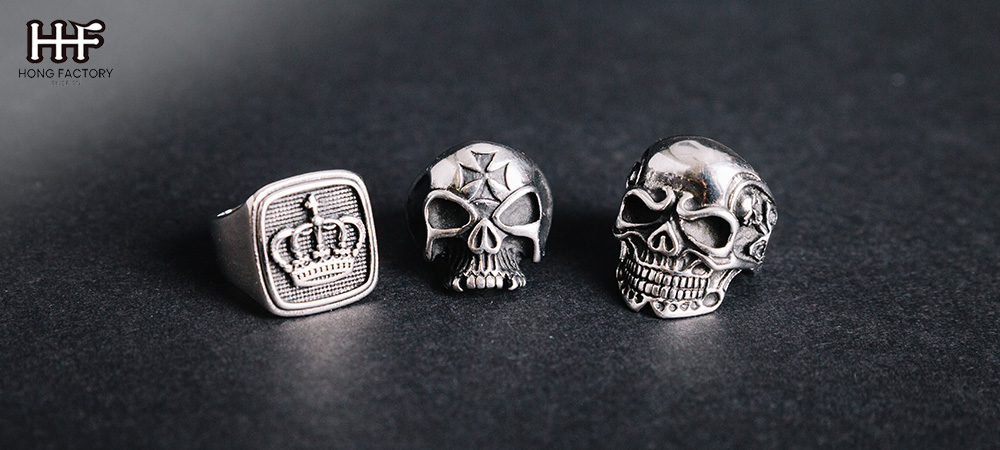Expanding a jewelry business from a local operation to a global brand is an exciting yet ambitious endeavor. The allure of international markets is undeniable, offering access to new audiences, increased revenue potential, and the opportunity to establish your brand as a global player. However, scaling a business successfully requires strategic planning, cultural awareness, and a focus on efficient operations. In this article, we’ll guide you through how to scale your jewelry business globally in just 90 days, covering essential aspects such as market expansion planning, cultural considerations, logistics management, and risk mitigation.
Understanding the Opportunity of Business Scaling
The jewelry industry is thriving, with global sales projected to grow steadily in the coming years. Whether your jewelry brand specializes in fine craftsmanship, sustainable materials, or affordable luxury, scaling your business internationally allows you to tap into lucrative markets like Europe, Asia, or North America. While the potential rewards are enticing, global growth also poses challenges such as navigating diverse consumer preferences, managing logistics, and mitigating risks. A well-executed growth strategy is the key to overcoming these hurdles and ensuring success.
Let’s break down how to scale your jewelry business step by step
Step 1 – Craft a Market Expansion Plan
The foundation of scaling your jewelry business lies in creating a comprehensive market expansion plan. This blueprint will guide your entry into international markets and ensure your efforts are focused and efficient.
1.1. Market Research
Start by identifying which markets offer the most potential for your jewelry niche. Research consumer demand, preferences, and spending habits in different regions. For example, minimalist designs may resonate in Scandinavian countries, while intricate, statement pieces might appeal to Middle Eastern markets.
Additionally, evaluate the competitive landscape. Are there local or international brands already dominating the market? What gaps can your brand fill? Use tools like Google Trends, Shopify analytics, and industry reports to gather data.
1.2. Set Clear Goals
Define what success looks like for your brand within 90 days. Whether it’s achieving a specific revenue target, gaining a set number of new customers, or establishing partnerships with local retailers, having measurable goals will help you stay on track.
1.3. Determine Entry Strategies
Decide how you’ll enter international markets. Options include
- E-commerce: Selling directly to global customers via your website or online marketplaces like Amazon or Etsy.
- Partnerships: Collaborating with local distributors or boutique stores to showcase your jewelry.
- Pop-Up Shops: Hosting temporary retail events in high-traffic areas to introduce your brand.
Each strategy has its pros and cons, so choose what aligns best with your brand identity, budget, and target audience.
Step 2 – Embrace Cultural Considerations
Cultural awareness is a crucial aspect of scaling any business. Jewelry, in particular, is often tied to cultural traditions, symbolism, and personal expression. Understanding these nuances ensures your brand resonates with international customers.
2.1. Design Adaptations
Consider adapting your designs to reflect local tastes and traditions. For instance, certain gemstones or metals may hold cultural significance in specific regions. In India, gold jewelry is highly cherished, while in Japan, understated elegance may be more appealing.
2.2. Brand Messaging
Tailor your marketing campaigns to align with cultural values and preferences. Avoid using generic content that may feel disconnected from the local audience. Instead, highlight aspects of your brand that align with their traditions, such as craftsmanship or ethical sourcing.
2.3. Language Localization
Ensure your website, product descriptions, and marketing materials are translated into the local language. Beyond translation, focus on localization—adapting content to reflect cultural nuances. For example, the way you describe a wedding ring in the U.S. may differ from how it’s marketed in China.
2.4. Festive Seasons and Events
Leverage local holidays, festivals, or special events to market your jewelry. For instance, promoting bridal collections during wedding seasons or launching limited-edition items for Lunar New Year can help your brand connect with international customers.
Step 3 – Optimize Logistics Management
Efficient logistics are the backbone of scaling your jewelry business globally. From inventory to shipping and customer service, smooth operations ensure a seamless customer experience.
3.1. Inventory Management
Decide whether you’ll centralize inventory in your home country or establish regional warehouses. Centralized inventory may reduce overhead costs, but regional warehouses can speed up delivery times and reduce shipping expenses.
3.2. Shipping Solutions
Partner with reliable shipping carriers that offer international services. Look for options with competitive rates, package tracking, and insurance to protect high-value shipments. Consider offering multiple shipping options, such as standard and expedited delivery.
3.3. Customs and Taxes
Research customs regulations, import duties, and taxes in your target markets. Jewelry often falls under regulated categories, so ensure your products comply with local laws. Provide clear information about potential taxes to customers to avoid surprises.
3.4. Returns and Repairs
Establish a hassle-free returns policy for international customers. Additionally, consider offering repair services to build trust and customer loyalty. Working with local partners for returns or repairs can enhance efficiency.
Step 4 – Implement Risk Mitigation Strategies
Scaling a business internationally comes with inherent risks. Proactively addressing potential challenges can prevent costly setbacks.
4.1. Financial Risks
Fluctuating exchange rates, payment fraud, and transaction fees are common risks in international trade. Mitigate these by
- Using payment gateways that support multiple currencies.
- Implementing fraud detection tools.
- Hedging against currency fluctuations through forward contracts.
4.2. Legal and Compliance Risks
Ensure your business complies with international trade laws, trademarks, and intellectual property rights. Register your brand in key markets to protect against counterfeiters.
4.3. Operational Risks
Disruptions in supply chains or shipping delays can impact customer satisfaction. Build relationships with multiple suppliers and carriers to create redundancy in your operations.
4.4. Reputation Management
Negative reviews or cultural missteps can damage your brand’s reputation. Monitor social media, customer feedback, and press coverage to address concerns promptly. Partnering with local influencers or ambassadors can also help build a positive image.

The 90-Day Growth Strategy
Here’s a high-level timeline to scale your jewelry business globally in 90 days
Days 1–30 – Preparation and Planning
- Conduct in-depth market research.
- Finalize target markets and entry strategies.
- Adapt product designs and marketing materials for cultural relevance.
- Establish partnerships with local distributors or influencers.
Days 31–60 – Launch and Execution
- Launch your e-commerce platform for international sales.
- Promote your brand through localized marketing campaigns.
- Begin shipping and monitor logistics performance.
- Gather feedback from early customers and refine your approach.
Days 61–90 – Optimization and Scaling
- Analyze sales data and customer insights.
- Expand into additional regions or marketplaces based on performance.
- Implement improvements in logistics and customer service.
- Scale marketing efforts through paid ads and collaborations.
Conclusion
Scaling your jewelry business globally in 90 days is an ambitious yet achievable goal with the right strategy. By crafting a detailed market expansion plan, embracing cultural considerations, optimizing logistics, and mitigating risks, you can position your brand for sustainable growth in international markets.
Remember, success in global business scaling isn’t just about selling more products—it’s about building meaningful connections with customers worldwide. With careful planning and execution, your jewelry brand can go from local to global and shine on the world stage.
Now is the time to take the leap and make your mark in the international jewelry market—your next success story awaits!
